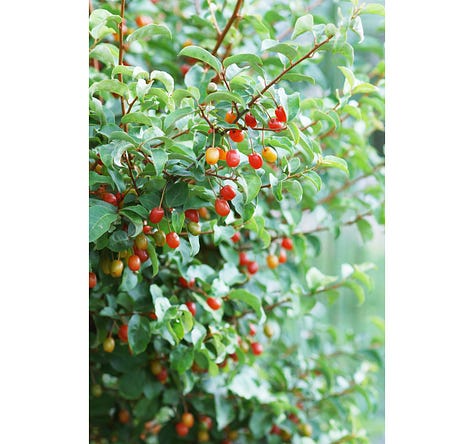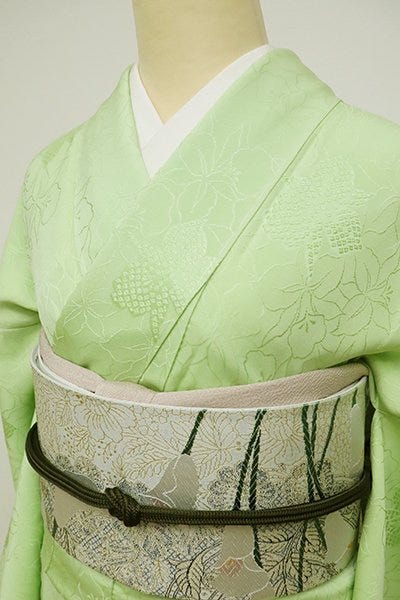April 25 - 29
霜止出苗
しも やんで なえ いずる
Shimo yande, nae izuru
Frost recedes, rice grows
Each year is full of firsts to look forward to—many of the kō we’ve talked about so far mark the coming of new things and fresh starts post-winter: the first haze, the first peach blossoms, the first rainbows. But a year is also naturally full of lasts—an ending for every beginning. Or, put another, less final, way, a pause until the cycle winds its way around again.
As the warmer rains of Kokū bring life-giving water to the blooming flowers and growing grains of spring, so too do they wash away the last lingering frosts of winter. A common saying about this period is:
清明になると雪が降らなくなり、穀雨になると霜が降りることもなくなる
Seimei ni naru to, yuki ga furanaku nari, Kokū ni naru to shimo ga furiru koto mo naku naru
”Snow stops falling at Seimei, and frost stops forming at Kokū”
This is good news for farmers, particularly of tea and rice, where the quality of the final crop is greatly impacted by how well its young, green leaves are protected in the early stages of planting. Still, while Kokū traditionally marks a shift to more stable weather from earlier capricious storms, “receding” is not the same as “gone for good,” and growers need to be mindful of wasure-jimo (忘れ霜).
Literally meaning “forgotten frost,” it’s a cold snap that strikes when the genial warmth of late spring has your guard down. It’s said this can happen up until the evening of the Eighty-Eighth Night, an auspicious occasion we’ll cover in due time next kō1.
So long as one’s prepared, though2, seed rice in nursery planters spend this kō becoming greener and greener. With each day, they grow into a verdant carpet inside the beds they propagate in prior to the paddies. Once they reach around 20cm in height—which they will soon with the right care—they'll be embedded in their gridwork of shallow ponds to hopefully flourish into Japan's most important crop.
The true growing season is right around the corner.
Let’s go over the kanji in this kō. 霜 we’ve already seen a few times in our sayings above—it’s read “shimo” and means “frost.” Next is 止, which is here read yande, the '-te form'3 of yamu, meaning “to be over.” It’s an uncommon reading, with 止 usually being tomaru/tomeru (止まる/止める, “to stop”), but we do see it sometimes in the verb for quitting something: yameru. Yamu is just the intransitive form.
This kō is grammatically rare among the 72, because we have two separate (but joined) things happening. So as the frost recedes, we then have rice seedlings (nae, 苗) come out (izuru, 出). This is the same “izuru” that’s in the names of Kōs 3 and 6, however those used different kanji to represent the same word/idea. This one is technically the “correct” one (出ずる), whereas in #3 it’s 上 (“above”) and #6 it’s 動 (“move”).
A last interesting kanji note that we skipped over: 苗, which can mean seedling but, as here, more commonly refers to a rice seedling. Its made of two radicals: 田, a rice paddy, and 艹, grass.4 Looking at the picture above, the seedlings in their planters certainly seem like rice-grass!



The planters themselves are called nawashiro (苗代), which I mention because they lend their name to two of the three things above. Nawashiro ichigo (苗代苺) is a wild raspberry that ripens around this time, and nawashiro gumi (苗代茱萸) is a thorny shrub that fruits now and flowers in fall5. The last photo is of a kimono dyed in the traditional color wakanae-iro, “young-rice seedling color.”
Rice, being a a hearty crop grown in climates the world over, can be planted directly into the ground without the nawashiro step, but the practice of raising the seedlings carefully in these nurseries first goes back at least to the Nara Period (8th century CE) in Japan, where it was recorded in the Fudoki.6 It's a matter of careful attention and respect for time-tested processes. A common thread in Japan.
The cultivation and consumption of rice is truly near and dear to Japan, with more famous varietals like Koshihikari and Tsuyahime having the same ‘brand recognition’ on supermarket shelves as a Pinot Noir or Chardonnay would for wine. And unlike most staple crops produced in large-scale by industrial agriculture, there remain a lot of local farmers planting small plots each year across the towns and villages of Japan. The cycle of rice planting and harvesting is a familiar sight to many, if not nearly all, Japanese people. Mainly this process is mechanized in modern times, but there are festivals and community events around the country where it’s done by hand. If you’re in the country at the moment, keep an eye out in the comings days and weeks.


On top of being culturally important through thousands of years of Japanese history, rice also makes a perfect accompanying dish to carefully chosen seasonal cuisine. For this kō, that could include:
● Seasonal vegetable
yomogi, よもぎ, mugwort● Seasonal seafood
itoyori, いとより, golden threadfin bream7● Seasonal snack
kusa-mochi, 草餅, mugwort rice cakes



As the last of the overnight frosts give way to longer and warmer daylight hours, the primary color of the Japanese landscape shifts further and further green, blanketed by a sea of gently waving rice shoots. Along with more stable weather, the end of Kō 17 also brings the Golden Week holidays, and one step closer to summer.
If you are traveling for Golden Week, take good care and may your trains and hotels be only reasonably crowded. Though watch out you don’t get surprised by any forgotten frosts. It’s always hard to tell when something makes its last appearance for the year until it’s been gone for a while.
See you next kō~
[Images & info by kurashikata.com, kurashi-no-hotorisya.jp, 543life.com, and Wikipedia except where otherwise noted]
I’ll get back on schedule at some point soon, I hope!
May 2nd this year
In Shizuoka, Japan’s most famous tea-growing region, there’s a meteorological station dedicated to forecasting when the threat of late frost is fully past (called the Oso-jimo Yohō, 遅霜予報) as well as specialized fans for preventing such leaf-wilting threats
Another quick Japanese lesson for those needing it: a -te form is what we call the conjunctive form of Japanese verbs, meaning they connect to another verb or clause (so here it’s like “frost recedes, and then…”)
Its proto-shape is 艸, which makes it pretty easy to tell what it represents!
There’s an interesting seasonally-reversed tree: the aki-gumi, a cousin that flowers now and fruits in fall
A geographical description of different provinces and their cultural practices, one of the earliest written attempts to catalog the nation in total








Another gorgeous post full of good mind food and poetry... forgotten frosts, weeks made of gold to look forward to, the very special shade of green in a kimono... yum! Thank you for this.